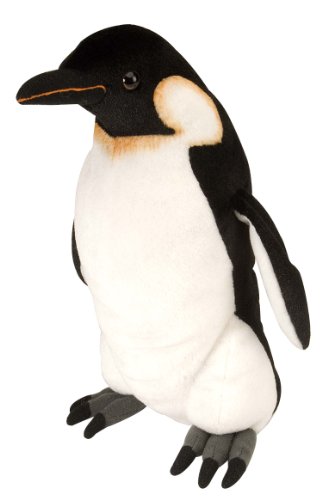GOOGLE PENGUIN | GOOGLE PENGUIN SEO

The Google Penguin
Google Penguin: definition, examples & videos about the algorithm. Google Penguin updates info, How-To Google Penguin SEO & techniques for recovery if hit.
---------------------------------------------
What's black and white and kills your links?
The Google Penguin!
Just when you thought you were safe in the water with this bad bird, Google's Matt Cutts announced on March 12, 2013, that a new Google Penguin Algorithm Update is coming that, in his words, "will be one of the most talked-about updates of the year."
He made this chilling announcement at Search Marketing Expo in San Jose, California, fueling a swarm of panicked tweets across cyberspace.
On May 22, 2013, at 1:00 pm PT/4:00 pm ET, Matt Cutts made the announcement on "This Week in Google" live broadcast that the new Penguin Algorithm has begun and "2.3% of English queries will be impacted by this update."
Table of Contents
TABLE OF CONTENTS - Jump to Section

What is Google Penguin?

Google Penguin is a Google algorithm that hatched on April 24, 2012, with this official notice from Google.com.
The algorithm was introduced as a new and improved method of finding and penalizing sites which violated the existing Google Webmaster Guidelines.
How did Google Penguin get its name? Matt Cutts, head of Google Search Quality, said:
"We thought the code name actually might give too much info about how it works, so the lead engineer got to choose. I suggested a fuzzy animal and the engineer picked Penguin because of black and white, and Panda worked."
(Google Panda is the Penguin's older brother, an algorithm which targets content.)
The Google announcement came with no startling revelations; it was simply an improvement in the way Google detects violators of its guidelines. When Penguin launched, more than 700,000 websites were affected and saw their rankings plummet to the depths of search results or disappear altogether from the Google index.
The foremost complaint of webmasters was that their long-practiced linking strategies were suddenly labelled webspam by the new Google algorithm.
Spam Backlinks Ad
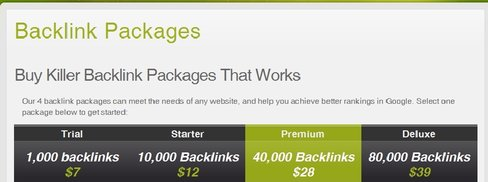
If you own a website, you've seen these ads – either online or via e-mail. (My guess is you might even see a few pop up on this page from ad servers.) Even after the launch of Google Penguin, these mass-linking schemes never diminished nor did gullible webmasters stop purchasing them. Purchased links of any kind, let along in bulk, violate Google Webmaster Guidelines and are targeted by Google Penguin as 'unnatural links.'

Google Penguin
Unnatural links include followed links from:
1. forum comments, guestbooks and signatures
2. low-quality article sites
3. low-quality directories
4. unrelated sites
5. installed widgets
6. site-wide footers on multiple websites
7. advertising
8. affiliates
9. link exchanges, link wheels, link networks, bookmark sites, blogrolls
10. links from multiple sites under the same ownership
11. automated programs or services
12. multiple sites using identical anchor text
13. buying or selling links
Penguin and Paid Links
There's nothing wrong with purchasing advertising links and the Google AdWords program is a prime example of that.
The problem with paid external links comes when they are not accompanied by the NoFollow attribute and, thus, pass Google PageRank. This violates Google's Webmaster Guidelines.
Cracking down on paid links is an ongoing process for Google's Webspam team. Check out this recent tweet from Google's Matt Cutts:
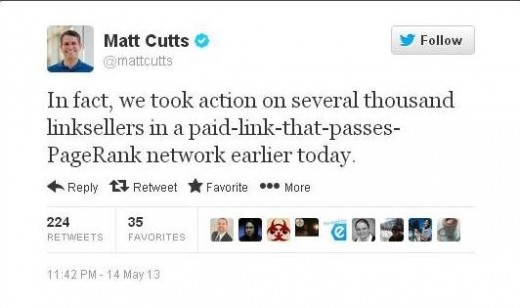
More on NoFollow Requirements
Webmasters still don't take this seriously. Matt Cutts released yet another video on May 29, 2013, about the NoFollow tag for paid links and advertorials. Notice that not only does Google require the NoFollow tag on the link, but it also requires that the content clearly advises the user that the link is an advertisement.
When Penguin first flew on the scene, more than 25,000 webmasters woke up with this notice from Google in their in-boxes:
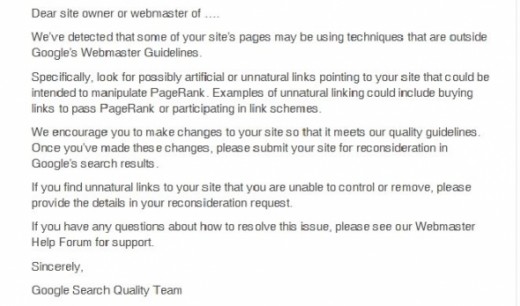
Google's Link Spam Example - links to Unrelated Sites

That was one example given by Google for link spam. In this example, the article is about health and exercise, but the links are about lending. External links on a webpage should always direct to important, additional information about the topic.
Here's another form of link spam:
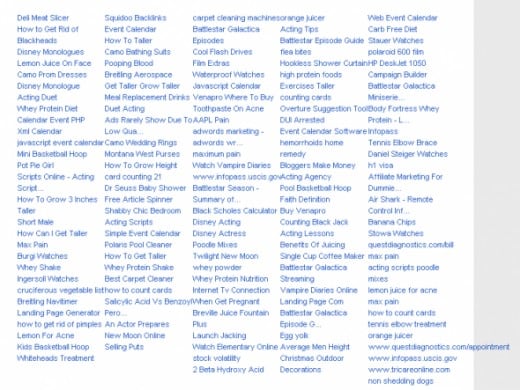
This is nothing more than a list of 139 anchor text links. Anchor text links use specific keywords with the intent to influence search results rankings. In the example above, the subject matter does not relate to the subject of the article where these links appear, stuffed below the article's comments section. This practice is called link stuffing.
This identical link spam appeared on 129 pages on Squidoo.com, which totals 17,931 spam, internal, anchor text links.
This is Google Penguin bait.


FREE WEBSITE MAGAZINE
Stay informed with in-depth research for e-commerce, online marketing, SEO and website design with your free subscription to Website Magazine.
Your subscription to this print magazine, including free postage, is free for U.S. addresses – other countries are $30 per year. Not only that, when you subscribe a tree will be planted in your name by ReplaceATree.org.
Click here to get your free subscription to Website Magazine

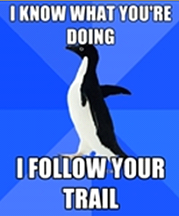
Google Penguin and Anchor Text
Time was when a searcher entered a keyword phrase into the Google search box, he could click on a search result and land on a webpage where the keyword phrase wasn't found. At the top of the page would be a message from Google in a grey box that said the search term was "only found in links pointing to the page."
In other words, the website owner had collected vast numbers of links using anchor text for a given keyword phrase to lure searchers to a webpage about something else.
That method of manipulating Google search results no longer works. Further, Google Penguin penalizes sites with too many inbound links which use identical anchor text. Today's link building strategy must achieve natural links with natural anchor text.



Google Penguin SEO
As vicious as the Google Penguin was on linkspam, more than 96% of the sites that lost their rankings from Penguin were a result of ordinary, garden-variety webspam – commonly known as 'blackhat SEO.'
Google defines webspam as any practice which violates its Webmaster Guidelines. The first task of Google Penguin SEO is to investigate a website for webspam.
Most common violations include:
1. keyword stuffing
2. hidden text or links
3. scraped or spun content
4. automatically generated content
5. affiliate marketing that doesn't 'add sufficient value'
6. pages which install malware or trojans
Webmasters who fell victim to Penguin for webspam knew what they were doing was against the Guidelines and most weren't too surprised when the Google algorithm caught up with their practices. Still, you will see these same techniques tried everyday.
Check out this example of keyword stuffing which is found on Squidoo.com:
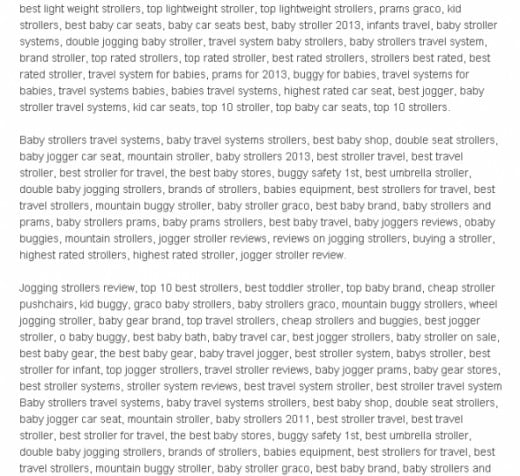
This example is still online.
All told, there are 167 keyword phrases on the webpage in the example above, all jammed into four paragraphs beneath the comments section.
This is the kind of webspam the Google Penguin eats for lunch.
Desktop Penguins
Penguin Targets the Cesspool
Eric Schmidt, Executive Chairman of Google, once remarked:
"The Internet is fast becoming a cesspool."
The Blekko search engine estimates that over one million spam webpages are uploaded every hour on the World Wide Web.
A top priority of Google Penguin SEO is examining a website's content.
One of the massive problems on the Web is the volume of spun articles and auto-generated content. These methods of content generation usually plagiarize a legitimate article and switch out nouns and adjectives.
Consider the example of spun content below that was uploaded (and removed) on Squidoo.com. This example is text taken from a Wikipedia.org article on "Google Panda" and put through spinning software:
Spun Content Sample
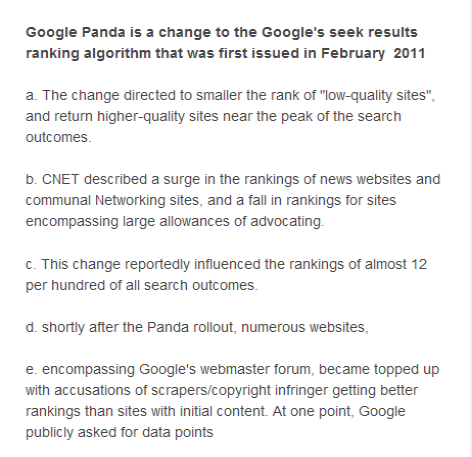
Spun Content
Spun content is easy for a human to identify: the word usage is poor, the substituted wording often makes no sense, and the meaning of the article is lost.
Google algorithms are becoming more astute in identifying spun content and penalizing webpages where it is found.

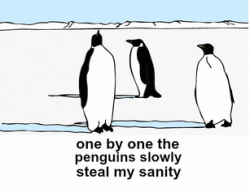
Google Penguin Updates
Since the release of Penguin in April, 2012, there have been three Google Penguin updates:
May 25, 2012
October 9, 2012
May 22, 2013
With the announcement by Google's Matt Cutts on March 12, 2013, that another big update was due, it was like waiting for the big quake in California: You know it's coming; you just don't know when or what it will do. By the end of the day on May 22nd, the update finished for all languages. Sites in languages other than English took a larger hit as some countries are more known for webspam practices.
Waiting for the Big Penguin 3 Update



Google Penguin Recovery
When Google Penguin first surfaced, webmasters were justifiably worried that their sites could be vandalized by competitors bombarding their sites with link spam. Google listened and developed a tool for webmasters to use in these rare cases.
The disavow links tool was announced on October 16, 2012, on the Google blog, one week after the third version of Google Penguin was released.
It's not a quick fix, but Google states that reports submitted with the disavow tool will be considered. The exact comment was:
"We treat it as a very strong suggestion. We don't treat it as something that we absolutely have to abide by."
Google spokesman Matt Cutts cautions that most people should NOT use this tool and that it is only for "power users who really know what they're doing."
Cutts also stated that webmasters should first try to get unwanted backlinks removed from the Web before using this tool and that requests made with the tool could "take multiple weeks" to go into effect. The takeaway: it's not an easy fix nor is it a quick fix.
Disavow Links Tool Video
Buy Penguins - Not Links
Before You Link - Think About Penguin
Samples of Bad Links
On February 12, 2013, Google announced a new service for webmasters adversely affected by Google Penguin. The service gives samples of links in a website's profile that Google considers detrimental. For an explanation of this feature, watch this two-minute video.
Which Links to Remove for Google Penguin

Google Penguin Recovery
Google presently sends "hundreds of thousands" of violation messages to webmasters every month. Matt Cutts disclosed on February 13, 2013, that 90% of these messages have to do with egregious, black hat techniques that even a novice could identify as spam.
About 4% of the messages were for low-quality content – content that simply has no 'added value.' About 3% are related to hacking, about 2% are about link buying and 1% are for link selling.
What can a webmaster do to recover from a Penguin punishment? John Mueller, of Google Switzerland, hosted a live-streamed Google Webmaster Hangout from Germany on February 15, 2013. Following is my transcript of the question/answer session:

Question: Our website is still showing no signs of improvement on the SERPS [search engine results pages]. We have disavowed all unwanted links and optimized all pages based on advice provided in a November, 2012, Google Hangout. We have tried everything. Please help.
Mueller: That's something that can take weeks or months to get processed.
We often see individual links in a disavow file when they [webmasters] probably should disavow the whole domain. [He specifically mentioned: forums, article submission sites, and low quality directories.] With the disavow file, we have to re-crawl those individual URLs before we can disavow those links. That's something that can sometimes take weeks or even months to kind of get processed.
Question: When we try to clean up a domain which got the unnatural link profile message, the webmasters of low quality websites are very slow to reply and remove links. Does the disavow link tool affect/help the reconsideration request?
Mueller: If you can remove the links directly from that [linking] website, that's obviously the best thing to do because then they [the links] are not on the Web anymore, they don't affect anyone anymore. Whereas if this is something that takes a long time, something that webmasters aren't responding at all to, then using the disavow tool is fine then.

Question: Should you seek to have the linking website remove links AND file a request with the Google Link Disavow Tool?
Mueller: It's pretty much one way to cover your bases there. So, if you see that these responses are slow, then using the disavow tool is a good idea.
Question: Unnatural link notice states 'simply disavowing links will not be enough to make a reconsideration request successful. We also need to see good-faith efforts to get inorganic links removed from the Web wherever possible.' But what if we can't remove?
Mueller: Essentially, what we are trying to avoid here is that you go out and you buy a lot of links for your website and then, when you get a manual spam action and you think 'Oh, well let me go in and just disavow all of these links and then I'll be back in the search results again.'
What we really want to see is that you actually take some effort to clean up these problems so that we're pretty much confident that you're not just going to bounce things back and forth. So, as much as possible, make it clear that this is something that we're not going to be doing in the future, that you've taken significant steps to clean up the issues that you've created over time. Then that's something that really helps the Webspam team understand that you're actually going to kind of stay clean with your website and that you're not going to bounce back and forth all of the time.
Essentially, what we want to see is that you're making it clear that you understand the problem, that you took the steps to kind of clean this up, and that we can trust you that you're not just going to turn around tomorrow and do the same thing again.
And so if we can see that you have a collection of your links that you've worked on, that you've tried to interact with these webmasters to get that cleaned up, that you've been able to remove a significant part of those links completely from the Web - then that all kind of adds up and helps us to understand that you're actually doing the right thing in trying to get all of this cleaned up.
Sometimes it might be that there are still individual issues that we see when we do a spot check and that's cases where you'll see us kind of pushing back and saying, 'Hey, you did some work but we are still seeing problems here and you should do a little bit more.'
--------------------------------------
Your Site May Not Recover from Google Penguin
Google Penguin recovery can be a slow process. Even if all of the link spam can be successfully removed, Google warns that a site will not return to its prior search results position.
And recovery attempts may not be successful at all. Notice that Google emphasizes that webmasters created the spam, not Google.
It may well be that a website has to start all over again with a new URL.
New Penguin Information - May 13, 2013
This video was just released from Google
Matt Cutts explains more details about the mega Penguin Update Three, which went live on May 22nd, as well as new changes to search algorithms expected this summer. This is a must-watch.
Google Penguin Update 3

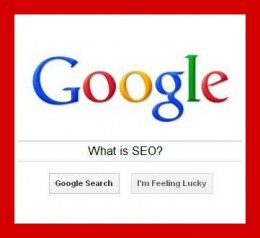
Related Content
For more information on SEO, read these articles.
Read this online tutorial and Beginner's Guide to SEO:


Revise your website content for Google Panda and learn about Google Panda updates with this guide:

Learn content writing strategies for addressing the Google Panda algorithm here:


Find out about the duplicate content penalty and how to avoid receiving one.


Learn how to optimize press releases for search engines.

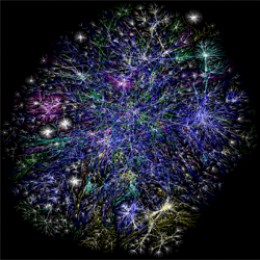
Read over 100 quotations about the World Wide Web, including quotes about SEO and quotes from the founders and employees of Google.com:


Want to earn money working online? Join the Writer Fox Writers Den.
Connect with Writer Fox™ on Google+.


Protected By Copyscape
Text and images are protected by Copyscape.
Share - Don't Copy.
Copyright © 2013 Writer Fox™. All Rights Reserved.
Unless otherwise stated, all other images are via שועל ספר; used with permission.

